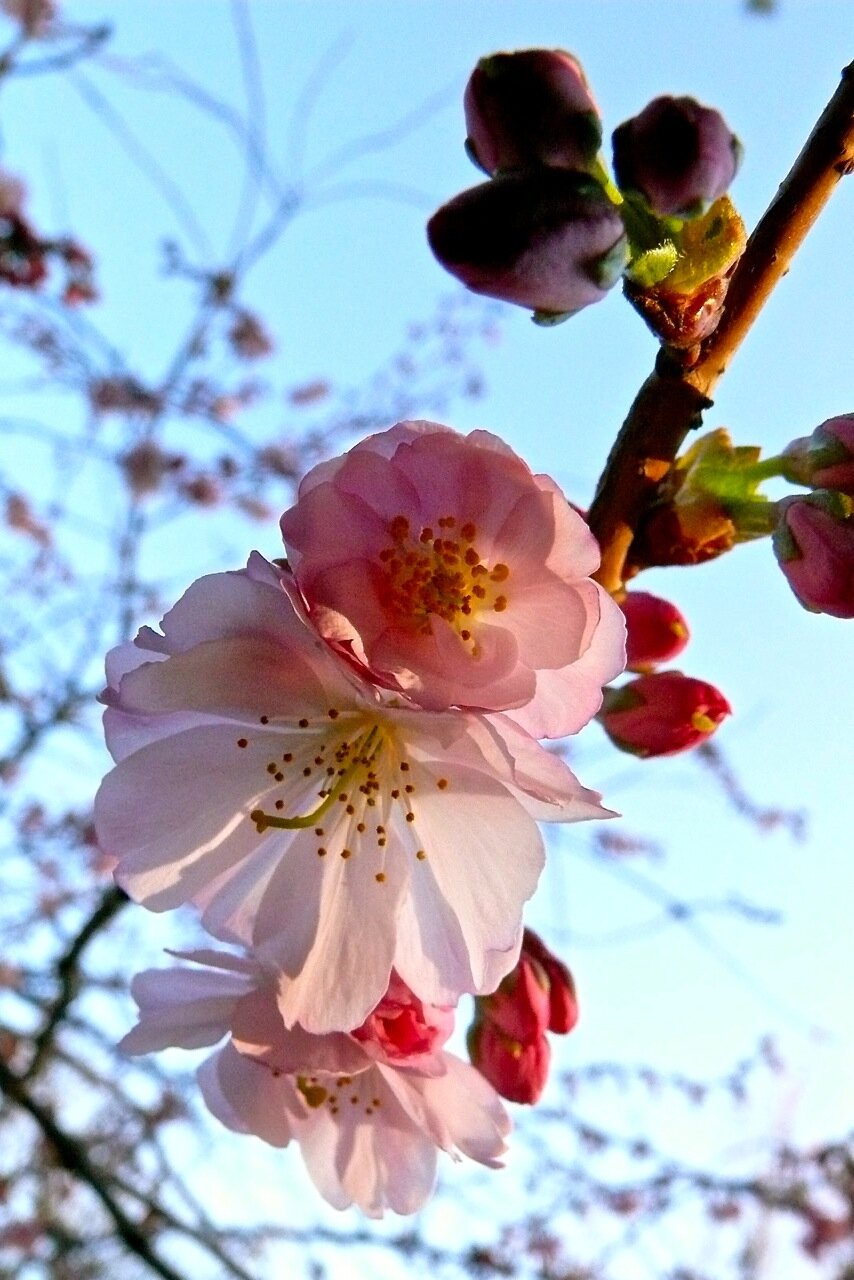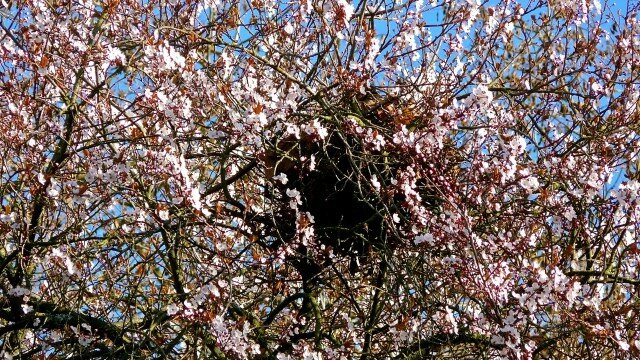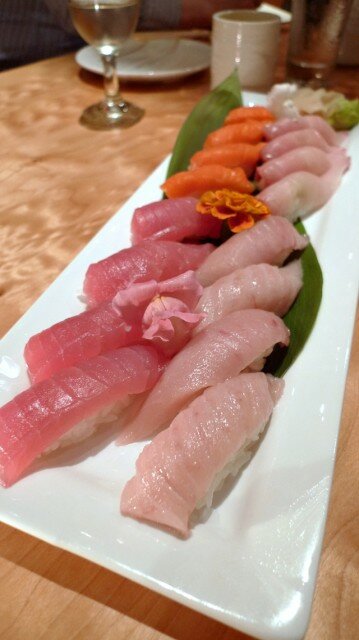Steven Han’s new Capitol Hill venture Momiji opens to the public as of dinner tonight. The restaurant’s space, in the gutted Dawson Plumbing Building on 12th at Pine, is as much of a story as the food itself–not many restaurants send out press releases touting their landscaper, woodworker, and lighting installation artist, along with the chefs and bartender. (Be sure to check out CHS and Eater for more photos.) The SunBreak was on hand for a preview dinner on Monday night, and here’s some of our thoughts.
Audrey: What I took away from dinner at Momiji–what made the biggest impression on me and has stuck with me after the fact–is the restaurant’s aesthetics rather than the food. That’s damning praise.
Margaret: The aesthetics of the space are certainly beautiful. All the paperwork sculptures [by Yuri Kinoshita] were my favorite.
Jay: The restaurant is gorgeous, with the garden, lighting, roof tiles, and more essentially transporting diners to Japan. Chikako Watanabe’s kaiseki menu continues that journey–potentially.
The preview dinner menu teased at this potential, offering goma dofu (sesame tofu with sweet miso paste; refreshing and delicious, though the texture was a little off at the bottom), kakuni pork (braised kurobuta pork shoulder with shishito and grilled spring onions; exquisite, though the dish would be much better with pork belly than shoulder), and vegetables in dashi broth (aka nimono; delicate, but would have benefited from an umami boost from fish in a non-vegetarian broth).
Margaret: The food that sticks most prevalently in my mind is the vegetables in dashi broth, which I would not have expected last night. I thought for sure the pork or the nigiri would be the dishes I was thinking of, but the broth came first to my mind. I’d love to try the non-vegetarian version [with bonito].
Audrey: The meal fared better with the simple dishes (the cup of vegetables, the fatty pork) instead of the complicated ones (those rolls). That nigiri (tuna, copper river sockeye, albacore belly) was one of the best things we had all night. I could’ve eaten everything they brought for the table, easily. But the sushi rolls and the night’s cocktails were less successful.
The shouchu cocktails are more interesting than delicious: The Yama Villa (Chiran Bukeyashiki, orgeat, lime, and egg white) was a shochu take on the sour and was probably the most popular. Everyone hated the toddy-like cocktail the Onsen (Takara Towari, hot water, agave-orange butter, orange zest) except for me, and even I wasn’t that thrilled with it. And there was something not quite right with the Dhampir (Ikkoman, orange, lemon, brown sugar vanilla syrup). I think bartender Will Doherty (formerly of Kushibar) likes his drinks a little weird–and pricey, as there’s some $12 drinks that I find hard to rationalize having on a menu in this economy.
In the same vein, frankly, I don’t know what an authentic-minded restaurant like Momiji is doing serving a sushi roll topped with filet mignon and tomatillo salsa. But I suppose there is a balance to be struck between authenticity and what’s viable in the Capitol Hill marketplace.
Jay: Will the kaiseki menu dishes be able to shine through in a menu that doesn’t yet offer a kaiseki meal, and which is dominated by endless numbers of crazy sushi rolls? Will Capitol Hill diners be daring enough to go beyond the safety of said sushi rolls?
Margaret: It was troubling to me that the kaiseki menu was not anywhere to be found in the larger, standard menu.
Jay: I fear Momiji might become a pretty place for loud partying (and it is loud inside) over cocktails, with the food, for most, an afterthought. I hope I’m wrong. I’ll be watching from the tranquility of the garden, slowly sipping dashi.










